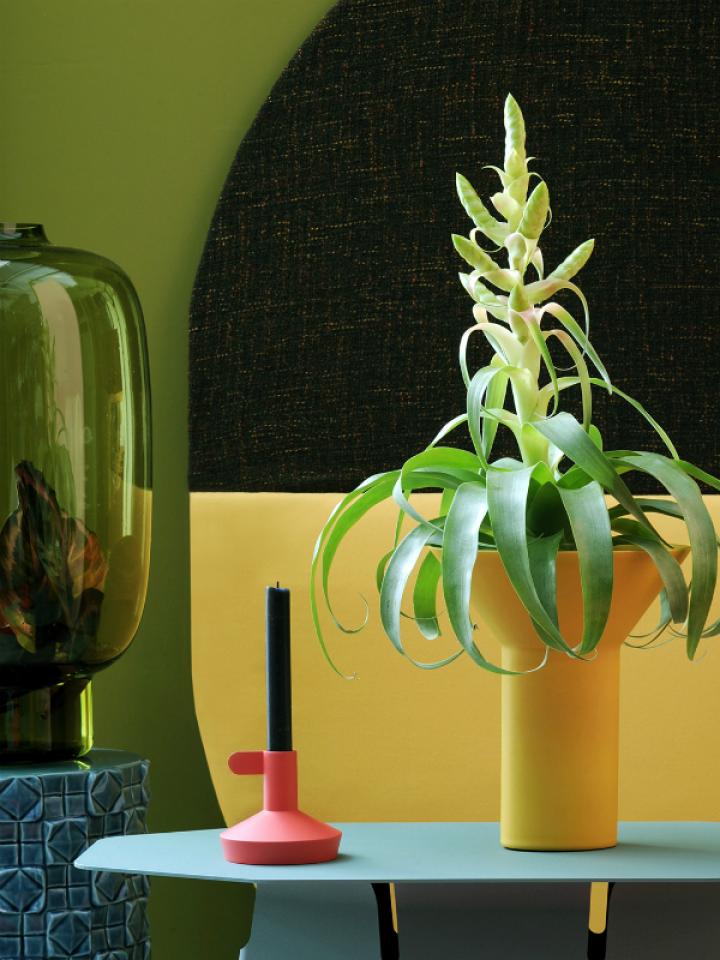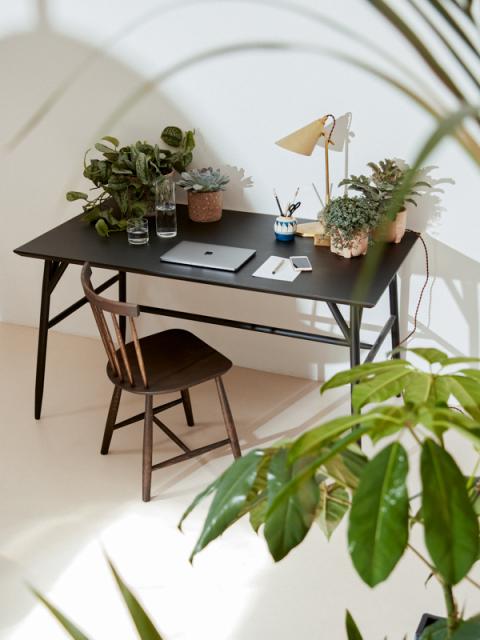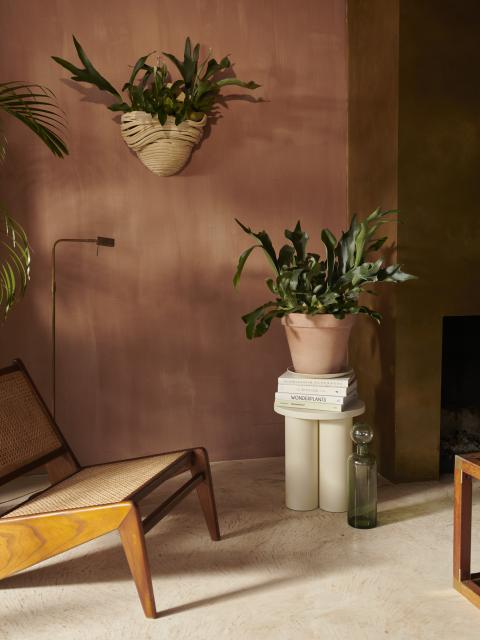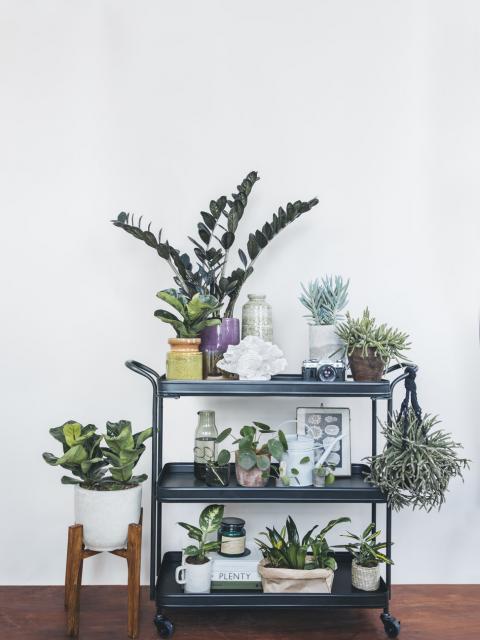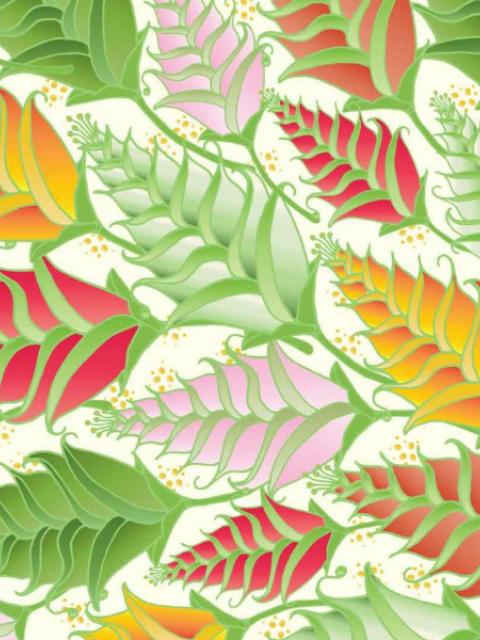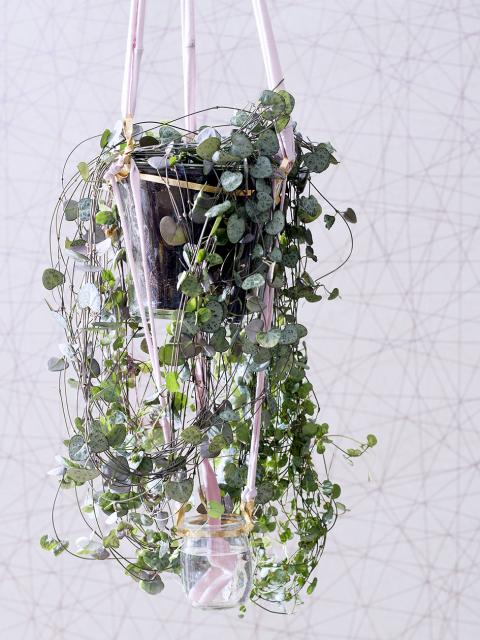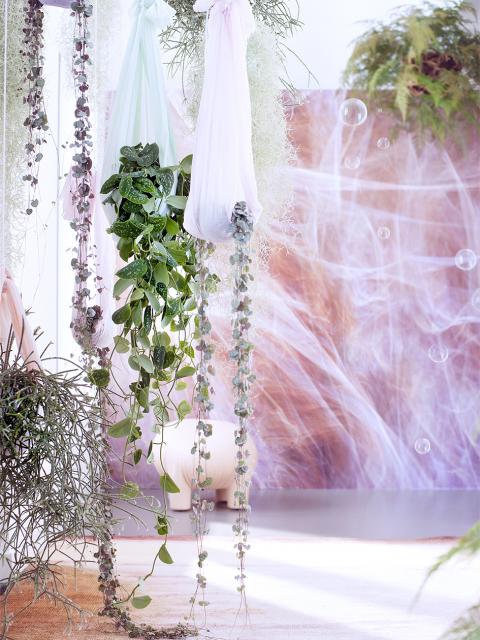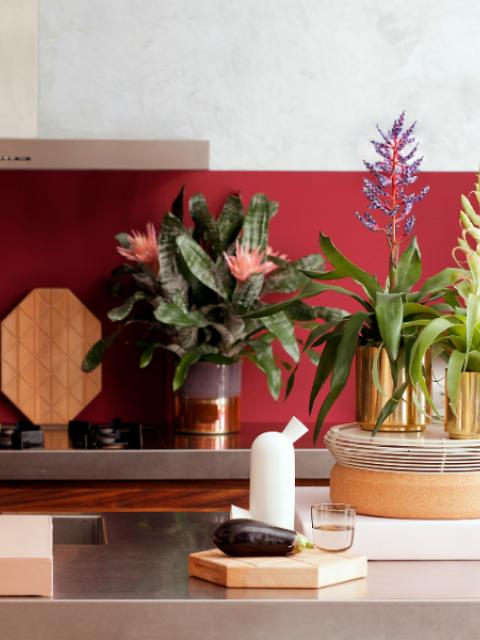Colours and shapes
A cheerful mess out of which one or more outstanding features emerge: that’s what Tillandsia looks like at first glance. The greenery is narrow and pointy, and amongst it grow shapes that most resemble a funky spoon, an alien torch or a collection of flames. The colours are spectacular: magenta with indigo, bright orange or red, purple with pink - it’s almost too much to take in. What we often think of as flowers are actually the bracts. The flowers themselves are very small. Although Tillandsia looks like a delicate exotic, it’s actually a strong, easy houseplant which can keep looking beautiful for up to 6 months with little effort. Most Tillandsias have few or no roots, and get water and nutrients from the air through scales on their leaves. You can suspend them or attach them to a shelf without pot or soil.
Symbolism
Because they need no soil and look utterly unearthly, Tillandsia is often linked to science fiction, aliens, travel to Mars and other intergalactic matters. it’s the perfect plant for nerds, goths, dreamers and lovers of something a bit different.
Origin
Tillandsia is a member of the Bromeliad family, and there are more than 500 known species. They grow in the forests, deserts and mountains of Central and South America, Mexico and the southern United States. The plant probably developed in the Cretaceous period some 65 million years ago. Fossil specimens have been dated to 30 million years ago, so that the plant can justifiably be considered primaeval. The Incas, Aztecs and Mayans used virtually every part of Tillandsia for food, protection, fibres and ceremonies. Because the plant can survive well away from water, the botanist Linnaeus decided in 1753 to name it after fellow Swedish botanist Elias Tillands, who hated water. You can’t say that scientists don’t have a sense of humour.

